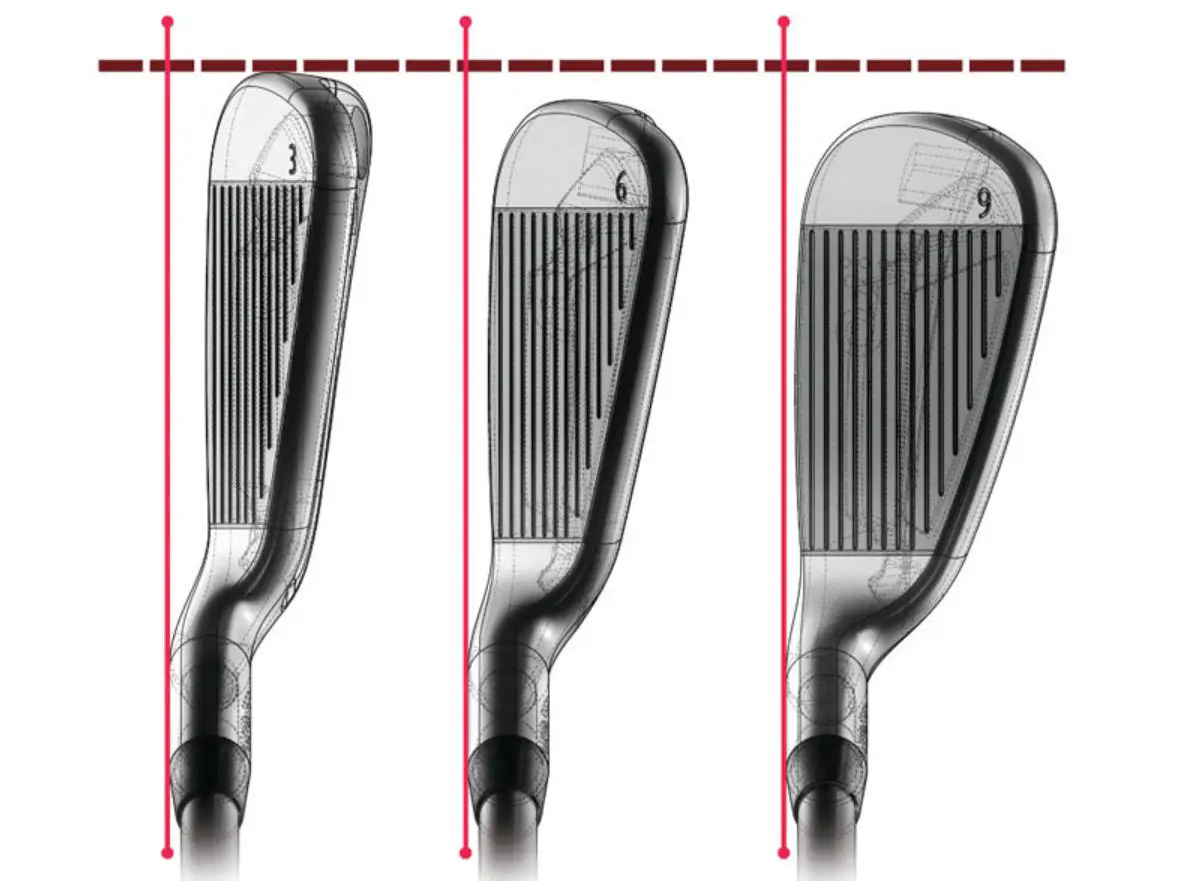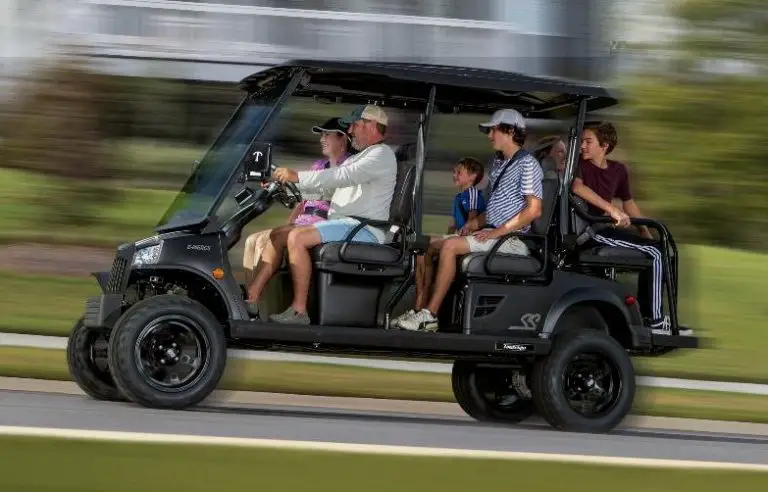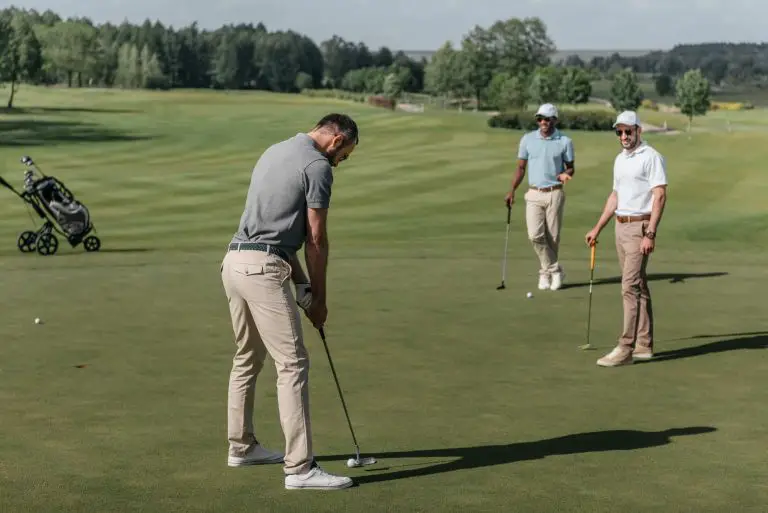What is Offset on a Golf Club

In the world of golf, the design and configuration of golf clubs play a vital role in a player’s performance on the course. One key characteristic that significantly impacts a golfer’s swing and ball flight is offset. But what exactly is offset on a golf club?
Offset refers to the positioning of the clubhead in relation to the shaft. It determines the horizontal displacement of the leading edge of the clubhead from the hosel or the axis of the shaft. While it may seem like a minor detail, offset can have a profound effect on a golfer’s ability to square the clubface at impact and achieve consistent shots.
In this article, we will dive deep into the concept of offset on a golf club, exploring its definition, the different types of offset, and its impact on alignment, ball flight, and forgiveness. We will also discuss the factors that influence offset design and how golfers can optimize their game by understanding and utilizing offset effectively.
Whether you’re a seasoned golfer or a beginner looking to improve your skills, understanding offset and its influence on club performance can help you make more informed decisions when selecting the right golf clubs for your game. So let’s explore the world of offset on a golf club and unlock its secrets to elevate your performance on the fairways.

What is Offset on a Golf Club?
To grasp the concept of offset, it is important to understand its fundamental definition. Offset, in the context of golf clubs, refers to the forward displacement of the leading edge of the clubhead from the hosel or the axis of the shaft.
The amount of offset can vary depending on the club type, design, and manufacturer. It is typically measured in millimeters or inches, representing the horizontal distance between the leading edge of the clubhead and the hosel.
How Offset Affects Alignment and Ball Flight
Offset plays a crucial role in aligning the clubface at address and throughout the swing. When a club has offset, the leading edge is positioned slightly behind the shaft axis, resulting in the clubface naturally closing or rotating towards a closed position. This alignment feature can help golfers square the clubface at impact, promoting a straighter ball flight and reducing the likelihood of slicing the ball.
The amount of offset can influence the extent to which the clubface closes during the swing. More offset generally leads to a greater degree of closed face angle, helping golfers who tend to slice the ball. Conversely, less offset or no offset allows for a more neutral or open face position at impact, suitable for golfers who tend to hook the ball.
The Relationship Between Offset and Clubhead Design
Offset is intricately linked to the design of the clubhead, particularly the positioning of the hosel and the center of gravity (CG). The hosel, where the shaft connects to the clubhead, is responsible for the club’s structural integrity and weight distribution.
A clubhead with more offset generally features a hosel that is set back from the leading edge, positioning the CG farther back from the face. This design promotes a higher launch angle, increased forgiveness, and improved playability for golfers who struggle with getting the ball airborne consistently.
Conversely, clubs with minimal or no offset typically have the hosel positioned closer to the leading edge, allowing the CG to be positioned closer to the face. This design favors golfers seeking a more penetrating ball flight, increased workability, and maximum control.
Popular Types of Offset in Golf Clubs
Offset can vary across different types of golf clubs, catering to the specific needs and preferences of golfers. Here, we explore the common types of offset found in drivers, irons, and putters.
Offset in Drivers
In drivers, offset is often minimal or nonexistent, as golfers generally prioritize distance and a more neutral ball flight off the tee. The focus is on maximizing clubhead speed and optimizing launch conditions. However, some game-improvement drivers may offer a slight amount of offset to assist golfers in squaring the clubface at impact.
Offset in Irons
Offset in irons is more prevalent, particularly in game-improvement or super game-improvement irons. These clubs are designed to offer forgiveness and assistance to golfers with slower swing speeds or those who struggle with consistent ball-striking. Irons with more offset help golfers square the clubface, straighten out ball flights, and promote higher launch angles.
Offset in Putters
In putters, offset can also be a significant factor. The amount of offset in putters can vary from no offset to moderate offset, and even extended or double bend shafts. The aim is to help golfers align the putterface and achieve a more consistent and square impact position, enhancing accuracy and control on the greens.
The Influence of Offset on Golf Swing
Offset not only affects alignment and ball flight but also has an impact on the golf swing itself. Understanding how offset influences the swing can provide insights into how golfers can optimize their performance with the right equipment.
How Offset Affects Clubface Position at Impact
Offset influences the clubface position at impact by promoting a closed face or delaying its opening. When the leading edge is set back from the hosel, the clubface tends to close naturally during the swing, resulting in a square or slightly closed face angle at impact. This can help eliminate a slice and produce straighter shots.
Conversely, less offset or no offset allows the clubface to remain more neutral or open throughout the swing. This can be advantageous for golfers who want to shape their shots or who struggle with hooks.
The Role of Offset in Correcting Slice or Hook
Offset is particularly beneficial for golfers who struggle with a slice. The closed face position at impact, promoted by offset, helps counteract the open face angle that often leads to a slice. By encouraging a square or slightly closed face, offset can help golfers produce straighter shots and reduce the side spin that causes slicing.
For golfers who tend to hook the ball, less offset or no offset can be advantageous. These golfers often have a closed face angle at impact, and reducing the offset can help them square the clubface and promote a more neutral or open face position, reducing the likelihood of hooking.
Impact on Consistency and Forgiveness
Offset can enhance consistency and forgiveness in golf clubs. The closed face position at impact, facilitated by offset, helps golfers achieve a more consistent ball flight by reducing the effects of an open face. It provides additional time for the golfer to square the clubface, resulting in straighter shots and improved accuracy.
Moreover, offset can increase the club’s resistance to twisting on off-center hits, leading to improved forgiveness. When the clubface remains more stable through impact, mishits are less likely to result in severe slices or hooks, and the ball is more likely to travel on a straighter path.
Factors Impacting Offset Design
Several factors come into play when determining the offset design in golf clubs. These factors include clubhead size, loft, shaft length, and grip size. Understanding how these variables interact with offset can help golfers make informed choices when selecting clubs.
Clubhead Size and Offset
Clubhead size and offset often go hand in hand. In general, larger clubheads tend to have more offset, as they are primarily designed for forgiveness and higher launch angles. Smaller clubheads, such as those found in blade-style irons, typically have less offset to allow for greater workability and shot shaping.
Loft and Offset Considerations
The loft of a club can also influence the amount of offset required. Higher lofted clubs, such as wedges, may have more offset to help golfers with short game shots that require more accuracy and control. Lower lofted clubs, like drivers or long irons, often have minimal offset or no offset, allowing for more workability and customization of ball flight.
Shaft Length and Offset
Shaft length can affect the perception of offset. Longer shafts can visually reduce the apparent offset, making the clubhead appear more in line with the shaft axis. Conversely, shorter shafts can accentuate the offset, making the leading edge appear further back from the shaft. Understanding the relationship between shaft length and offset can help golfers find the right visual alignment that suits their preferences.
Grip Size and Offset Preferences
Grip size can also influence the perception of offset and overall club feel. Larger grips can affect the golfer’s hand position, potentially altering the clubface alignment and the player’s ability to square the face at impact. It’s essential to consider grip size in conjunction with offset to ensure proper alignment and consistency in the swing.
Understanding the Benefits and Drawbacks of Offset
Like any aspect of club design, offset has its benefits and potential drawbacks. Understanding these can help golfers make informed decisions based on their skill level, swing characteristics, and personal preferences.
Benefits of Offset in Golf Clubs
- Improved Alignment: Offset promotes a closed or square clubface position at impact, assisting golfers in aligning the clubface accurately.
- Reduced Slice: Offset can help correct a slice by minimizing the tendency for an open face angle, resulting in straighter shots.
- Increased Forgiveness: Offset enhances forgiveness on off-center hits by reducing the clubhead’s twisting and stabilizing the clubface.
- Higher Launch Angle: Clubs with more offset tend to launch the ball higher, providing more carry distance and softer landings.
Potential Drawbacks of Offset
- Reduced Workability: Clubs with more offset may offer less shot-shaping capabilities, as the closed face position can limit the ability to shape shots with precision.
- Preference and Visual Perception: Some golfers may prefer the look of less offset or no offset, as they find it more visually appealing or conducive to their swing style.
- Increased Hook Tendency: Golfers who tend to hook the ball may find that clubs with offset exacerbate their hooking tendency, and reducing the offset or using clubs with minimal offset may be preferable.
Finding the Right Balance for Individual Players
The optimal amount of offset varies for each golfer and depends on their swing characteristics, ball flight tendencies, and personal preferences. Experimentation and club fitting can help golfers determine the ideal offset that maximizes their performance and enjoyment on the course.
Exploring Offset in Different Types of Golf Clubs
Offset can be found in various types of golf clubs, including drivers, irons, and putters. Each club type utilizes offset differently to enhance performance and suit the needs of different golfers. Let’s explore how offset is incorporated into each of these clubs.
Offset in Drivers
Drivers typically have minimal offset or no offset at all. The focus with drivers is on maximizing distance and achieving a neutral ball flight off the tee. Golfers aim to generate high clubhead speed and optimal launch conditions, making offset less of a priority in driver design.
Offset in Irons
In irons, offset becomes more prevalent, particularly in game-improvement or super game-improvement irons. These clubs are designed to offer forgiveness and assistance to golfers with slower swing speeds or those who struggle with consistent ball-striking. Irons with more offset help golfers square the clubface, straighten out ball flights, and promote higher launch angles.
Offset in Putters
Offset also plays a role in putters, where alignment and accuracy are crucial. Putters may feature different amounts of offset to help golfers achieve a square clubface position at impact. The alignment aid provided by offset can assist golfers in consistently striking the ball along their intended target line.
Adjusting Offset for Personalized Performance
While golf clubs come with predetermined amounts of offset, some golfers may benefit from adjusting the offset to suit their specific swing characteristics and preferences. Customization and club fitting can play a significant role in optimizing offset for personalized performance.
Customizing Offset for Individual Swing Characteristics
Golfers with unique swing characteristics, such as a consistent hook or slice, may benefit from customizing the offset in their clubs. A club fitter can assess the golfer’s swing and recommend adjustments to the offset to help address specific shot tendencies and improve ball flight consistency.
Seeking Professional Club Fitting for Offset Adjustments
To determine the optimal offset for individual players, seeking professional club fitting is highly recommended. A club fitter can analyze the golfer’s swing, ball flight, and preferences to identify the ideal offset that promotes a square clubface position at impact and enhances overall performance.
Experimenting with Different Clubs to Find Ideal Offset
Golfers can also experiment with different clubs that offer varying degrees of offset to find the ideal balance for their game. Trying out different clubhead designs, shaft options, and grip sizes can provide valuable insights into the impact of offset on ball flight, consistency, and overall feel.
Conclusion
Offset is a significant factor in golf club design that influences alignment, ball flight, and overall performance. By understanding the concept of offset and its effects on the golf swing, golfers can make informed decisions when selecting clubs that best suit their game.





